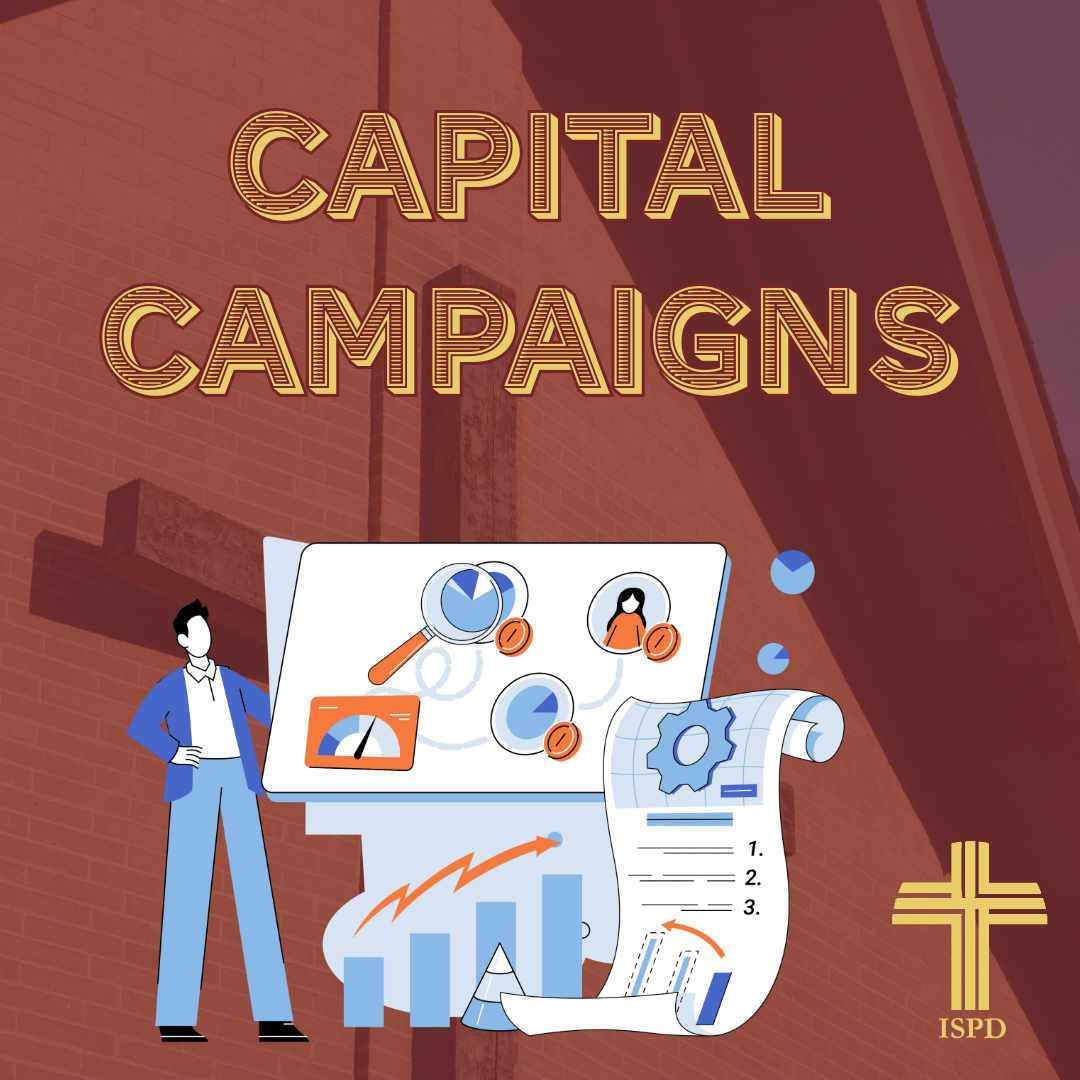- Rationale for This Position
-
- Part 1
- Premises/Basic Truths: What Experience and Data Tells Us
-
- Part 1 and Part 2
- The Future of Catholic Schools and Parishes: Steps/Suggestions to Prevail
-
- Part 3 and Part 4
At the conclusion of the fourth issue in May, we will publish one inclusive and comprehensive document.
Rationale for This Position
We believe that the 31+ year history of ISPD provides the credibility to state our position. Founded in 1989, we have worked with thousands of Catholic schools, parishes, and (arch) dioceses throughout the United States. We begin our 32nd year this June 2021.
Premises/Basic Truths: What Experience and Data Tells Us
In Part I and Part II, ISPD offered 27 premises/basic truths that we find to be relevant to the state of Catholic schools and parishes today. We now turn to the steps and suggestions to prevail. We offer fifteen.
Steps and Suggestions to Prevail
Before we begin to walk down this road, I would like to ask you to do me a favor. Pending on your age, you might remember playing with what I call a “magic slate.” This was a tablet with a plastic sheet and a red wooden pencil. You could write or draw anything on the magic slate, and if you wanted to erase it, you just lifted the plastic sheet and “POOF,” it was all gone. Well, that is what I invite you to do now. Please lift-up your plastic sheet and erase all barriers and roadblocks and ways of thinking that suggest, “That will never work here; we are different.” I would like to think “way out of the box” and share 15 suggestions that could very well impact the future of Catholic schools and parishes for generations to come. One size will not fit all; however, these suggestions are meant to provoke and stimulate discussions and decisions of Catholic leaders on the (arch) diocesan level, in our parishes, and in our Catholic schools – mainly by asking the question, “Is it possible to make this work?”
Suggestion # 1
By the 2026 – 2027 school year, plan for tuition and fees to comprise no more than 50% of the Catholic school budget. Build 50%+ of the school budget around a vibrant development–advancement effort with emphasis on:
SHIFT IN FOCUS
- Collaborative resources shared with other Catholic schools
- Collaborative partnerships with partner parishes
- Corporate and business partnerships
- Community partnerships
- Individual financial partners – parents, alumni, past parents, parishioners, community members, and those who benefited so much from Catholic school education in the ’50s, ’60s, and ’70’s. (For example, Guardian Angels Program at St. Michael Catholic High School in Fairhope, AL)
NECESSARY BUT NO LONGER ENOUGH FOR THE FUTURE
- Annual Giving
- Capital Giving
- Grant writing
- Planned Giving
- Memorial Giving
- Endowment Growth
Suggestion # 2
Study the latest research by FADICA entitled “Managing Governance Change in Pre-K – 12 Catholic Schools” (FADICA 2020).
- Managing Governance Change in PreK-12 Catholic Schools reveals common themes, concerns, and best practices identified through interviews with more than 65 leaders in eight dioceses of varying demographics. While there is no one model that will serve all schools and dioceses, the key findings and the Governance Change Cycle explained in this report can assist school leaders to make sound, data-informed decisions through a deliberative process – before a crisis develops.
- Local-Executive: Individual schools governed by a singular authority (e.g., parochial schools);
- Local-Collegial: Individual schools governed partially or fully by a local board that has been delegated a degree of authority (e.g., inter-parish schools);
- Central-Executive: A group of schools governed by a singular authority (e.g., diocesan-owned schools);
- Central-Collegial: A group of schools governed partially or fully by a board (e.g., independent schools).
Suggestion # 3
Build relationships with every school family and every parish family.
- One-on-One visits every year
- What are the needs of the school; what are the needs of the school family?
- What are the needs of the parish; what are the needs of the parish family?
- Expectation agreement signed by both parties
- Win-Win relationships
I would like to share a success story of a Catholic school that no longer uses the word “tuition” — St. John Catholic School in Bartelsville, Oklahoma. Elizabeth Thrash, their Director of Development and Mission Advancement, shared this with us last month. Please note the relationship building with each family.
Catholic School “No Tuition” Business Model
St. John Catholic School in Bartelsville, Oklahoma
Elizabeth Thrash, Director of Development and Advancement
As Catholic school educators, our dream goal is to provide Catholic education at no cost for every student. With this passion, St. John Catholic School’s Pastor and President, Father John O’Neill, has the vision to seek to cover as much of the cost of education as possible for all Catholic students at St. John Catholic School. Fr. John states, “In reimagining the conversation around the cost of a Catholic school education, we must start with the current realities and invite our parents, our staff, and our parishioners to become partners in the vision.”
The “reimagined” business model is to focus on education value, the cost of that education and the financial gap to be made up of potential financial assistance, scholarships, and the family contribution. Therefore, why put a specific dollar amount on what is the “tuition” or “fee” for education? It is a team effort to provide Catholic education for each child: scholarships and assistance, family contributions, and parish ministry. This “family contribution” model is also a compassionate model for building relationships with families and the school. The goal is to partner together and provide a quality Catholic education for the child, creating a sense of the school being part of the family’s foundation.
The elements for Catholic school education, the value, and the cost, are all still present; however, the verbiage is different. At St. John Catholic School the word “tuition” has been removed from conversations, documents, and marketing material with all stakeholders: families, faculty, parishioners, donors, and the community. The primary change is in the verbiage and presentation of the educational value.
The principal’s conversation with returning and new families has been nuanced to include the basic elements of the educational value (the actual cost to educate a child at St. John – at this moment $10,500.00); discounts and potential assistance/scholarships available for the specific family. For our families, understanding the true educational cost for each child can be an eye-opener, but this also solidifies the real value of their child’s education.
In the past, the “tuition” figures that were given were about 50% of the true cost – thus the perceived “value” of the education was 50% less than the reality. Fr. John shares, “The true value of anything we spend our money on/or invest in helps us to take ownership and value that investment. Paying $25,000.00 for a car is one thing – investing $25,000.00 in a car valued at $31,000.00 puts a completely different light on that investment. In our model, paying $6,000.00 for tuition is one thing – investing $6,000.00 in a $10,500.00 education is both a reality and true investment.”
Education costs are the same for each student: teacher salary, utilities, administrative costs, etc. The family receives a “cost of education proposal” including a proposed family contribution. After the family’s review, if the family is not able to meet this proposed family contribution amount, the principal and our president meet and discuss the child’s and family’s needs. They will then have another conversation with the parents with payment options and any additional sources that may lower the family’s contribution amount.
This change of a “family contribution” in lieu of the typical “tuition” model means admission decisions are made on the child and family’s “needs” and parents’ ability to pay, not on a “need-blind” model where a school commits to helping a family to afford the tuition. The verbiage, conversations and the “family contribution” model help foster a sustainable relationship/partnership with the family and school as a collaborative effort to meet their child’s educational needs. In the future, as finances, resources, and enrollment allow, the hope is to be able to offer “family contribution free education” for our Catholic families. With this model, we can incrementally move in that direction as the realities allow.
Suggestion # 4
Catholic school and parish leaders need to understand and invest in Catholic Development – Advancement – Stewardship and educate the leadership groups of not only the value to the future of Catholic institutions but what role they should play in the implementation.
- Clergy
- Presidents and principals
- Development/Advancement/Stewardship officers
- Parish staff
- School faculty and staff
- Parish/Pastoral Council
- Finance Council
- School Advisory Council
- Boards
- Parent leaders
- Ministry leaders
- Alum leaders
Suggestion # 5
Breaking with age-old isolation, Catholic schools need to partner with each other and create collaborative plans of action in areas where resources could possibly be shared:
- Personnel
- Facilities
- Transportation
- Curriculum
- Technology
- Religious growth opportunities
- Community service
- Collaborative marketing
- Professional development
- Other
Suggestion # 6
Breaking with age-old isolation, Catholic parishes need to partner with other Catholic parishes and create collaborative plans of action in areas where resources could possibly be shared:
- Personnel
- Liturgy offerings
- Retreats
- Missions
- Facilities
- Ministries
- Attracting new families
- Religious education
- Community service
- Collaborative marketing
- Professional development
- Other
Is your magic slate still clean? If so, we look forward to having you with us for Part IV which will be released soon.[/vc_column_text][/vc_column][/vc_row]














